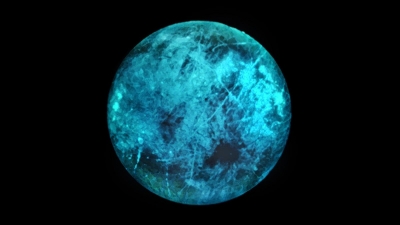
Jupiter’s icy moon, Europa, which is fast becoming the next big destination in planetary research, may actually glow in the dark.
The findings are a result of Earth bound experiments at NASA’s Jet Propulsion Laboratory (JPL) in California, which recreated Europa and Jupiter’s interactions. The researchers found that Europa possibly glows blue-white and blue-green through its ice and water interior, even at night.
Indian-origin NASA scientist Murthy Gudipati, and his team, were working on experiments to understand how Jupiter’s incessant radiation affects Europa. Jupiter emits the strongest radiation after the sun and is surrounded by the biggest planetary magnetic field in the solar system, which accelerates charged particles to high energies. This enormous magnetosphere spans over 1 million km in radius, engulfing Europa and many other moons.
Moons are normally visible at night because of sunlight that reflects off their surfaces or atmospheres. Europa, however, seems to be illuminated through the night, even with no sun, because of charged particles from Jupiter and its interior. “If Europa weren’t under this radiation, it would look the way our moon looks to us dark on the shadowed side,” Gudipati said. “But because it’s bombarded by the radiation from Jupiter, it glows in the dark.”
Europa’s night-side glow could provide information on its surface composition and whether it has conditions suitable for life. It is covered with a solid crust made of water ice and is thought to hold an ocean of liquid water underneath. Water is one of the strongest indicators of potential habitability.
Picture Credit : Google

